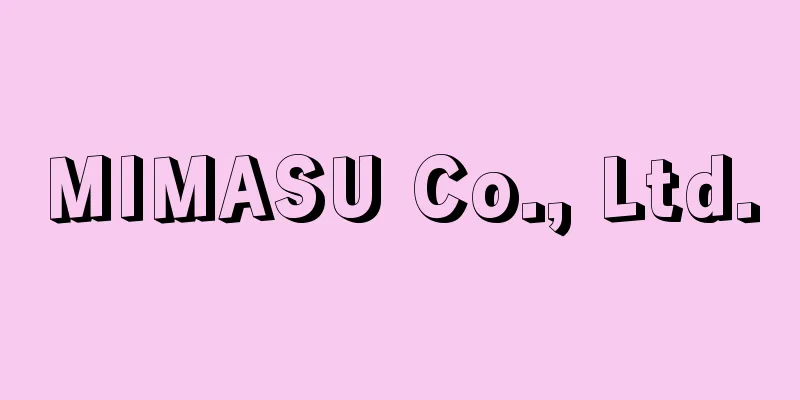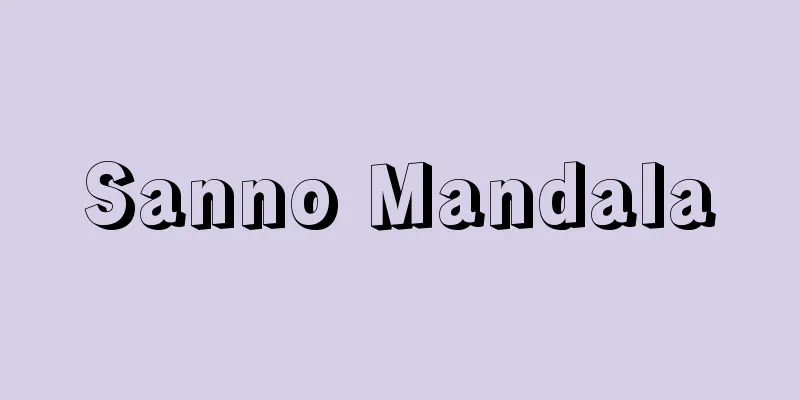Telephone - denwa (English)

|
A type of telecommunications. It is a means of communication that converts voice into electrical signals, transmits them to distant locations, and then converts them back into voice so that people can talk to each other. Invention of the telephoneResearch into the physical transmission of sound has been going on for a long time, but these methods involved attaching diaphragms to both ends of a string or rod, and mechanically transmitting the vibrations received at one end to the other, and so were not put to practical use. The principle of the modern telephone system, which transmits voice using electric current, was discovered in 1837 by American Charles George Page (1812-1868), and based on this, Frenchman Charles Bourseul (1829-1912) announced the idea of using the vibrations of a flexible diaphragm caused by voice in 1854. German Johann Phillip Reis (1834-1874) conducted experiments based on this idea in 1861, marking a step towards the realization of the telephone. Based on this research, the American Graham Bell invented a practical telephone in March 1876. Bell's telephone worked by creating electric current changes in response to sound wave vibrations, and transmitting these changes in electric current to transmit voice. In his first experiment, Bell spoke to his assistant Watson, famously saying, "Mr. Watson, come here, I want you," as the first words uttered over a telephone. Bell is known as the "father of the telephone" for going beyond the academic research that had existed up until then and promoting the practical application of the telephone. The first telephone that Bell made had a structure in which a vibrating piece was placed in front of an electromagnet, and the same one was used for both receiving and transmitting. [Ryo Tsuboi, Tetsuro Nagai, and Tetsuya Miki] History of the telephone in JapanTwo telephone sets invented by Bell were imported to Japan as early as 1877 (Meiji 10), the year after the invention, and experiments were conducted over a distance of two kilometers between the Imperial Household Ministry in the Akasaka Imperial Palace and the Ministry of Public Works in Akasaka Tameike Aoi-cho. This was the beginning of telephones in Japan. At first, telephones were mainly used by the police, and from around 1878 they were used for communication between government offices and the police in Tokyo, Yokohama, Osaka, and other areas. In 1883, exchanges for government telephones began to be used, and in 1890, general telephone exchange services were first started in Tokyo and Yokohama. At the time, there were 197 telephone subscribers, 155 in Tokyo and 42 in Yokohama. After that, as people realized how convenient the telephone was, the number of subscribers continued to increase, reaching 1,500 in 1892. By 1943 (Showa 18), the number had increased to 1.08 million, but it decreased during World War II and fell to 460,000 by the end of the war. Subsequently, with the post-war reconstruction, the number of telephone subscribers, which was 1.55 million in 1952 (Showa 27) when Nippon Telegraph and Telephone Public Corporation (now NTT) was established, increased to 10 million in 1968, 20 million in 1972, 30 million in 1975, 45 million in 1985, and further to 61.3 million, the highest number ever recorded for NTT, in 1996 (Heisei 8). Since then, the number of telephone subscribers has continued to decline due to the shift to new services such as ISDN, mobile phones, and the Internet. [Ryo Tsuboi, Tetsuro Nagai, and Tetsuya Miki] Equipment for connecting telephonesThe equipment for connecting telephones is roughly divided into four categories: telephone sets, exchanges, transmission lines connecting the exchanges, and subscriber lines connecting the exchanges and telephone sets. Of these, there are three types of transmission lines according to the transmission medium used: (1) wired transmission (nowadays, most of them are optical fiber cables), (2) terrestrial wireless transmission, and (3) satellite communication. Wired transmission, which has a large transmission capacity, is the mainstream, and terrestrial wireless transmission and satellite communication are used as alternatives in the event of a breakdown in the current system or an emergency disaster. [Ryo Tsuboi, Tetsuro Nagai, and Tetsuya Miki] PhoneThe first telephone made in Japan was manufactured in 1878 (Meiji 11) based on Bell's telephone, but the sound was extremely weak and production was discontinued in 1883. The Gower-Bell telephone, which combined Bell's telephone with a transmitter invented in 1879 by British Frederick Allen Gower (1851-1885), was imported from England in 1887. This telephone produced good results in a call experiment between Tokyo and Atami, so it was used when telephone exchange services began in 1890. In 1896, the Delville magnetic wall telephone with a turnable handle was introduced, and in 1899, the solid-back magnetic wall telephone for long-distance calls was introduced. Later, with the shift from manual to automatic switching, dial telephones appeared. The Type 2 automatic desk telephone was put into practical use in 1927 (Showa 2), followed by the Type 3 telephone in 1933, and the Type 4 telephone in 1950 (Showa 25), and then the Type 600 telephone was put into practical use in 1962, marking the completion of the rotary dial telephone. Furthermore, the push-button telephone, which appeared in 1969, made it possible to access computers and paved the way for the diversification of telephone services, such as automatic reservations from the telephone. Today, telephones with a wide variety of functions and designs are in widespread use, with telephones being combined with intercoms and facsimiles, and cordless functions being added. Meanwhile, public telephones began with the installation of magnetic public telephones in Shinbashi and Ueno in 1900. At the time, public telephones required the operator to connect the call and the operator would listen to the sound made when a coin was inserted. This method continued for about 50 years, but in 1953, the No. 4 automatic public telephone, which could automatically identify 10-yen coins, was put into practical use. Also, tabletop public telephones became known as red telephones and box-shaped public telephones as blue telephones. Currently, card-type public telephones (green) and card-type ISDN public telephones (gray) are widely used in Japan, while IC (integrated circuit) card-type public telephones are in widespread use overseas. [Ryo Tsuboi, Tetsuro Nagai, and Tetsuya Miki] SwitchJapan's first exchange was a magnetic switchboard that connected Tokyo and Yokohama in 1890. This first exchange was a manual switchboard that was connected by a telephone operator. Later, in order to connect large volumes of calls quickly and accurately, exchanges were replaced by automatic switches. The first automatic switches were of a type called step-by-step switches, and were first introduced in Japan at the Kyobashi Telephone Exchange in 1926. Crossbar switches were introduced in the early 1950s, and electronic switches that used computers in their control systems were introduced in 1972. Digital switches were introduced in 1982, and they became more multifunctional and reliable. In Japan, all telephone switches were replaced with digital switches in December 1997. [Ryo Tsuboi, Tetsuro Nagai, and Tetsuya Miki] Transmission PathA transmission line is a facility that multiplexes telephone lines between exchanges to connect them economically and with consistent quality. For multiplexing analog lines, a method called frequency division multiplexing (FDM) has been used, in which the signal of one telephone line with a bandwidth of 3.4 kHz is arranged at frequency intervals of 4 kHz. For multiplexing digital lines, a method called time division multiplexing (TDM) has been used, in which the 64 kilobit/second code string that encodes the voice signal of one telephone line is arranged sequentially in 8-bit units. Digital transmission lines began to be introduced in Japan in the early 1960s, and all transmission lines, including exchanges, were digitized in December 1997. Wired transmission lines started out as bare copper wires, but then unloaded cables (1932) and coaxial cables (1956) were used, and the number of lines was increased by using higher bandwidth cables. In the 1970s, coaxial cables were used to transmit 10,800 lines in analog and 5,760 lines in digital. In 1981, optical fiber cables were first introduced, and initially the transmission speed was 100 megabits per second (equivalent to 1,440 telephone lines), but by 1995 digital transmission speeds of 10 gigabits per second (equivalent to 130,000 telephone lines) were realized. Today's optical communications use wavelength division multiplexing (WDM), which uses multiple wavelengths in addition to time division multiplexing, and a single optical fiber can transmit signals at several terabits per second. Terrestrial wireless transmission lines were first put to practical use in Tokyo, Nagoya, and Osaka in 1954 using 4 GHz microwaves. At that time, the transmission capacity was 360 lines per system. After that, new frequency bands were developed one after another: 2 GHz (1957), 6 GHz (1961), 11 GHz (1961), and 15 GHz (1967). The 4, 5, and 6 GHz bands were widely used for long-distance transmission until the 1990s, but with the nationwide introduction of optical fiber cable transmission lines, this role ended around 2000. The 2, 11, and 15 GHz bands are now used for medium- and short-distance transmission, and the 20 GHz band is mainly used for short-distance transmission. Domestic telephone services via satellite communications began in 1983 using the communications satellite CS-2, with the main purpose of ensuring communications on remote islands and during disasters. After that, in 1988, CS-3 was introduced, adding a new use of satellite communications as a detour when terrestrial networks were congested. In 1995, the N-STAR satellite was launched (commercial services began in 1996), and in addition to its traditional uses, it began to be used as a mobile communications line for ships sailing in the waters off Japan's coast. [Ryo Tsuboi, Tetsuro Nagai, and Tetsuya Miki] Subscriber LineThe subscriber line connects the switchboard to telephones and other terminals, while mobile phones require wireless base stations, and conventional telephones require communication cables as well as utility poles, underground conduits, manholes, etc. Initially, bare wires were used, but from 1893 cables that were more resistant to wind and flood damage and could accommodate a large number of copper wires began to be used. Currently, plastic is used for insulation, and cables with a maximum number of pairs (one pair is two copper wires) of 3,200 pairs are in use. Furthermore, the installation of optical fiber cables has progressed rapidly since the 2000s. [Ryo Tsuboi, Tetsuro Nagai, and Tetsuya Miki] Phone Type(1) Single telephone: A telephone in which one subscriber uses a telephone line installed between the telephone exchange. (2) Joint telephone: A telephone line shared by two or more subscribers. In the days when it was difficult to get a phone even if you applied, this system was used to provide telephone sets to many subscribers with a small amount of equipment, but it has the disadvantage that when one subscriber's line is busy, other subscribers cannot use it. It has been decided to completely abolish this system in Japan, and new applications are not being accepted. (3) Key telephone: The official name is a simple telephone exchange. This type of telephone is widely used in small businesses and offices, where one or several subscriber telephone lines can be used by pressing a button to select an available line from among the many telephones in the business. (4) Private Branch Exchange (PBX) A private branch exchange is made up of the general subscriber telephone lines from the telephone exchange, switching equipment installed in subscriber homes, and internal telephones connected to the switching equipment. Private branch exchanges are primarily used when a business requires a large number of internal telephone lines. In the past, calls from outside were connected manually via an operator, but in Japan, PBX dial-in, which allows automatic connection to internal lines using 1.5 megabit/second ISDN, which began service in 1989, has become widespread. (5) Building telephone: The official name is business group telephone. This is installed in large buildings and other locations where there is collective telephone demand. A building telephone exchange or multiplexing device separate from the exchange at the telephone exchange is installed to connect the telephones in the building. (6) Public telephones: Telephones installed on the street, in stores, and other places that anyone can use. Public telephones started out as blue telephones (only 10-yen coins could be used) for street use, but now they have been replaced by green and gray telephones that can be used with telephone cards. There were also red telephones for store use only, and yellow telephones that could be used with both 100-yen and 10-yen coins, but they are no longer in use. In addition, there are public telephones on trains, ships, and automobiles. There were also public telephones on airplanes, but the service ended at the end of fiscal year 2003. Pink telephones, which are general, stand-alone telephones available to customers at stores, also function as public telephones. [Ryo Tsuboi, Tetsuro Nagai, and Tetsuya Miki] Call Type(1) Calls within a unit rate area: Calls between people within the same unit rate area are charged at a flat rate of three minutes regardless of distance. A unit rate area is an area that is considered to be roughly a single entity in terms of administrative divisions and the state of call traffic, and usually includes several to about ten cities, towns, and villages. (2) Outside-area calls: The longer the distance between unit rate areas, the shorter the number of seconds you can make a call for 10 yen. For outside-area calls, various discount systems are offered by carriers, such as nighttime discounts, late-night discounts, and Saturday and holiday discounts. (3) International calls There are two types of international calls: automated calls, where the user directly dials the number of the other country to connect, semi-automated calls (involving only the operator in the calling country) and manual calls (involving operators in both the calling and receiving countries). The charge for automated calls is usually per six seconds, while semi-automated and manual calls are charged per minute after the first three minutes. Depending on the carrier and region, there are various discount systems, such as nighttime and holiday discounts. [Ryo Tsuboi, Tetsuro Nagai, and Tetsuya Miki] Various telephone servicesA variety of services are available to make using the telephone more convenient. The main ones are as follows: (1) Push-button telephones are telephones that use a push button. By using numbers and symbols (*, #) to transmit data, you can check your bank balance, reserve a seat on the Shinkansen, and more. (2) Home telephone: A home telephone is a telephone set that can be used with up to four telephones on one telephone line. It allows users to make and receive calls from any telephone, and also has other functions such as call forwarding, intercom connection, etc. (3) Business Phone By operating the buttons, two or more telephones can share a telephone line, make internal calls between telephones, and put a line on hold during a call. Business phones do not require an operator or a switching room, and are easy to use and inexpensive, so they are widely used as simple manual switching devices and as subsystems for PBXs and building telephones. (4) Call waiting: When a third party calls while on another call, the subscriber can press the hook button on the telephone to talk to the third party while putting the first call on hold. This is convenient for subscribers who are frequently on the phone. (5) Telephone Ring If a call comes in when you are not at home or at the end of business hours, the caller will be automatically informed of the fact and reason for your absence, as well as your contact phone number. (6) Call forwarding: Calls received while you are away are automatically forwarded to another phone number you specify in advance. (7) Answering machine: If a call comes in while you are not at home, the answering machine will announce that you are not at home and then automatically record the caller's message on a tape or other medium. (8) Dual Number Service This is useful when you do not want to receive any calls other than those that are necessary, such as when you are busy or asleep, or as a measure against prank calls. In addition to the regular phone number, a telephone set is assigned another phone number (a secret number), which is not to be shared with anyone other than specific people, such as close relatives. (9) Collect Call Service: This service allows calls from outside the home or office to be made without charging the caller, and with the recipient's consent, the caller is responsible for the fee if the call is manually connected. (10) Toll-free service: This is a service in which the receiving party pays the fees for dialing a specific telephone number. It is used when mail-order companies wish to fulfill product orders from consumers by paying the fees. In Japan, this is also called the 0120 service because a special number starting with 0120 is used. In the United States, Canada, and other countries that use the area code 800, this is also called the 800 service. (11) Credit Call Service This service allowed users to sign up in advance with a landline telephone number as the billing destination for calls, and calls made while on a business trip or elsewhere were billed to that landline telephone. However, this service was discontinued at the end of fiscal year 2010. (12) Telephone conference service This service allows a pre-registered conference caller to call other conference participants, enabling a voice conference with up to 30 people. There is also a similar service called the "three-way call service" for general subscribers. (13) Welfare equipment Examples of welfare equipment include "Anshin," which allows elderly people living alone or people with physical disabilities to press an emergency button to call a specific contact, "Meiryo," which amplifies the caller's voice for the hearing impaired, and "Hibiki," which transmits the caller's voice to the bones of the skull and allows the caller to be heard through the vibrations. These services are expected to become even more diverse in the future. [Ryo Tsuboi, Tetsuro Nagai, and Tetsuya Miki] Digitalization of the networkTelephone service in Japan was started in 1890 (Meiji 23), and since then, the service has expanded nationwide, but most of the functions were lost during the Second World War. After the war, the country was rebuilt from the ruins, and the Nippon Telegraph and Telephone Public Corporation (now NTT), which was transformed from a government-run enterprise into a public corporation, implemented six five-year plans to expand the telegraph and telephone service. As a result, the number of telephone subscribers increased rapidly, and in 1977 (Showa 52), "backlogs (a situation in which a call cannot be made immediately after applying for subscription)" was eliminated, and in 1979, "automated and immediate nationwide dialing" was achieved. The telephone failure rate, which was 19 cases per 100 subscribers per month in 1953, decreased to 0.47 cases in 1984, and reliability was greatly improved. In addition, the telephone network was completely digitized in 1997 (Heisei 9), and an extremely good communication environment with no difference in call quality between long and short distances was realized. Mobile phones (including PHS) have rapidly spread since the mid-1990s, with over 120 million subscribers in 2010, and the telephone has now become an indispensable part of everyday life as a means of communication that allows you to talk to anyone, anywhere in the country, at any time. Furthermore, with the rapid development of information technology in society, new communication services such as facsimile communication and the Internet have become widespread in addition to voice communication, and the shift to broadband communication lines has made it possible to freely carry out video and multimedia communication. Until the 1970s, communication networks mainly relied on analog technology, so it was necessary to create an independent network for each communication service. Digital technology became widespread in the 1980s, and various types of information could be handled in a common manner once it was converted into a digital signal. This led to the idea of an integrated services digital network (ISDN), which could be used in common for various services, and this was realized at the end of the 1980s. NTT conducted ISDN experiments called the Information Network System (INS) model system in Mitaka and Musashino cities in Tokyo from September 1984 to March 1987, and has been providing it as the INS Net service since April 1988. Meanwhile, in the 1990s, the use of the Internet spread rapidly, especially among universities and research institutes, and the need for general use also increased. In response to such needs, in Japan, Internet connection services were started by Type 2 telecommunications carriers (communications carriers that do not own their own line facilities) in July 1993, and Type 1 telecommunications carriers (communications carriers that own their own line facilities, such as NTT) in December 1996. As the Internet became more widespread, the demand for broadband increased, and around 2000, high-speed Internet of several megabits per second via CATV (cable television) became widespread, followed by ADSL (asymmetric digital subscriber line). Furthermore, FTTH (fiber to the home), which Japan introduced ahead of the rest of the world in 2001, became widespread, reaching approximately 20 million subscribers in 2010. [Ryo Tsuboi, Tetsuro Nagai, and Tetsuya Miki] INS Net Service(1988-present) A digital network service provided by NTT that conforms to the international ISDN standard and allows not only voice communication, but also fax, data, video and other information to be sent economically over digital lines with high quality. There are two types of service: "INS Net 64" with a maximum speed of 128 kilobits per second, equivalent to two telephone lines, and "INS Net 1500" with a maximum speed of 1.5 megabits per second, equivalent to 23 telephone lines, but "INS Net 64" is the more popular service. The number of subscribers exceeded 10 million in March 2001, but has been decreasing since then. [Ryo Tsuboi, Tetsuro Nagai, and Tetsuya Miki] Internet connection service(1993-present) A service that provides Internet access services around the world to general users at a fixed, low-cost rate. Internet access services differ from telephone and INS net services in the following ways: (1) Packet network A network that transmits information in units of packets, which are blocks of data coming from a computer and have control information such as the destination attached to the beginning as a header. ↔ Circuit network [Ryo Tsuboi, Tetsuro Nagai, and Tetsuya Miki] Telecommunications carriersJapan's telegraph and telephone business has always been run as a government enterprise since its founding. However, in order to recover from the devastation that occurred after the Second World War, it was difficult for the government to respond to industrial, economic and social developments and the needs of the people, and to operate the business efficiently. Therefore, it was decided to introduce a corporate management system to improve and expand facilities and ensure convenience for the people, and the business operation form was changed from the Ministry of Telecommunications to a public enterprise, and Nippon Telegraph and Telephone Public Corporation (NTT) was launched in 1952 (Showa 27). The following year, in 1953, Kokusai Denshin Denwa Kabushiki Gaisha (KDD) was launched, and international telegraph and telephone services came to be operated by the private sector. Furthermore, a legal amendment in April 1985 liberalized the telecommunications business. The former Nippon Telegraph and Telephone Public Corporation was privatized as Nippon Telegraph and Telephone Corporation (NTT), and companies other than NTT and KDD were able to enter the telecommunications business. Among the new entrants, those who own their own line facilities and conduct telecommunications business are called Type 1 telecommunications carriers. Five companies obtained permission to operate as Type 1 telecommunications businesses, including Second Telecommunications Corporation (DDI), which led the way in its entry plan in April 1985, Japan Telecom, which was affiliated with Japanese National Railways (now JR), and Japan Highway Public Corporation-affiliated Japan Telecommunications Corporation. A telecommunications business operator that leases line facilities from a Type 1 telecommunications business operator is called a Type 2 telecommunications business operator. In 2004, the division into Type 1 and Type 2 was abolished, and the license system was abolished and replaced with a registration and notification system. Registered operators are now classified as Type 1 operators that are above a certain size, while small Type 1 operators and Type 2 operators are notified operators. As of April 1, 2010, there were 323 registered operators. In addition to NTT East, NTT West, and NTT DoCoMo, there are long-distance operators such as Softbank Telecom and KDDI (established in October 2000 by the merger of KDD, DDI, and Japan Mobile Communications), as well as regional, international, satellite, mobile, and CATV operators. There were also 14,927 notified operators. [Ryo Tsuboi, Tetsuro Nagai, and Tetsuya Miki] "Nippon Telegraph and Telephone Public Corporation, ed., History of the Telegraph and Telephone Business (1959, Telecommunications Association)" ▽ "Tokushige Kawanaka, ed., Telecommunications Yearbook 1983 (1983, Sancho Co., Ltd.)" ▽ "Nippon Telegraph and Telephone Corporation, ed., History of the Nippon Telegraph and Telephone Public Corporation (1986, Information and Communications Research Institute)" ▽ "Information and Communications Handbook 2002 Edition" (2001), edited and published by Information and Communications Research Institute [Reference items] | | | | | | | | | | | | | | | | | | | | | | | |Manual telephone switching operations by telephone operators. "Tokyo Fukei" (Tokyo Landscape, 1911 (Meiji 44)) Owned by the National Diet Library "> Telephone exchange in the Meiji period Source: Shogakukan Encyclopedia Nipponica About Encyclopedia Nipponica Information | Legend |
|
電気通信の一種。音声を電気的信号に変え、離れた場所に伝達し、これをふたたび音声に戻して相互に通話できるようにした通信手段をいう。 電話の発明音を物理的方法で伝達しようとする研究は相当古くから行われていたが、それらは、糸や棒の両端に振動板をつけ、一端で受けた振動を機械的に他端に伝えるものであったため、実用化には至らなかった。電流によって音声を伝える現今の電話方式は1837年アメリカのページCharles George Page(1812―1868)が原理を発見、これに基づきフランスのブールスールCharles Bourseul(1829―1912)が1854年に音声による可撓(かとう)振動板の振動を利用する着想を発表した。ドイツのライスJohann Phillip Reis(1834―1874)は1861年にこの着想による実験を行い、電話の実現に向けて一歩を進めた。 このような研究をベースにして、実用的な電話機の発明は、1876年3月にアメリカのグラハム・ベルによって成し遂げられた。ベルの電話機は、音波振動にしたがった電流変化をつくりだし、その電流変化を伝えることによって音声を伝えるという方式であった。最初の実験で、助手のワトソンに話した“Mr. Watson, come here, I want you”(ワトソン君、用があるからちょっと来たまえ)は、電話機を通じた人類最初のことばとして有名である。ベルはそれまでの学問的な研究の域を脱し、電話の実用化を進めた点で「電話の父」とよばれている。ベルの製作した最初の電話機は、電磁石の前に振動片を置いた構造であり、受話・送話とも同じものが用いられた。 [坪井 了・永井徹郎・三木哲也] 日本の電話の沿革ベルの発明した電話機は、発明の翌年の1877年(明治10)に早くも2台が日本へ輸入され、赤坂御所内の宮内省と赤坂溜池葵(ためいけあおい)町の工部省との間2キロメートルで実験が行われた。これが日本における電話の始まりである。最初は主として警察が電話を取り上げて、1878年ごろから東京、横浜、大阪などで官庁・警察の通信に利用された。1883年には交換機を使った官庁電話の交換が始まり、1890年には初めて東京、横浜において一般の電話交換業務が開始された。当時の電話加入数は東京が155加入、横浜が42加入の計197加入であった。その後、電話の便利なことがわかり、加入者は次々と増えて1892年には1500加入となった。1943年(昭和18)には108万加入まで増加したが、第二次世界大戦により減少し終戦時には46万加入にまで減少した。その後、戦後の復興に伴い日本電信電話公社(現、NTT)発足時の1952年(昭和27)に155万加入であったものが、1968年には1000万加入、1972年には2000万加入、1975年には3000万加入、1985年には4500万加入、さらに1996年(平成8)にはNTTの電話加入数としては最大の6130万加入に達した。それ以降は、ISDN、携帯電話あるいはインターネットなどの新サービスへの移行によって電話加入数は減少を続けている。 [坪井 了・永井徹郎・三木哲也] 電話を接続するための設備電話を接続するための設備は、電話機、交換機、交換機相互を結ぶ伝送路、交換機と電話機を結ぶ加入者線の四つに大きく分類される。このうち伝送路については、使用する伝送媒体により、(1)有線(現在ではほとんどが光ファイバーケーブル)伝送、(2)地上無線伝送、(3)衛星通信の3種類があるが、伝送容量の大きい有線伝送が主体となっており、現用システムの故障や非常災害時の代替用として地上無線伝送や衛星通信が使われている。 [坪井 了・永井徹郎・三木哲也] 電話機ベルの電話機をもとに国産第1号の電話機が1878年(明治11)に製造されたが、その音声はすこぶる微弱であって、1883年には製造が中止された。イギリスのガワーFrederick Allen Gower(1851―1885)が1879年に発明した送話器とベルの電話機を組み合わせたガワーベル電話機が1887年にイギリスから輸入された。この電話機が東京―熱海(あたみ)間で行われた通話実験で好結果を出したため、1890年に電話交換業務が開始されたときにはこのガワーベル電話機が使われた。1896年には、ハンドルを回すデルビル磁石式壁掛電話機が、また1899年には長距離通話用のソリッドバック磁石式壁掛電話機が登場した。その後、手動交換方式から自動交換方式へ移行するのに伴い、ダイヤル式の電話機が登場した。1927年(昭和2)には2号自動式卓上電話機、1933年には3号電話機、1950年(昭和25)には4号電話機が実用化され、さらに1962年には600形電話機が実用化されて回転ダイヤル式電話機として完成の域に達した。また、1969年に登場したプッシュ式の電話機は、コンピュータへのアクセスを可能とし、電話機からの自動予約など電話サービスの多様化への道を開いた。現在では、電話機とインターホンやファクシミリを組み合わせたり、コードレス機能を付加したりすることで多種多様な機能、デザインをもった電話機が普及している。 一方、公衆電話は、1900年に新橋と上野に磁石式公衆電話機が設置されたのがその始まりである。当時の公衆電話は、交換手に通話接続を依頼し、硬貨を投入したときの音を交換手が聞いて判断するものであった。50年間ほどは、このような方法であったが、1953年に10円硬貨を自動識別する4号自動式公衆電話機が実用化された。また、卓上形のものを赤電話、ボックス形のものを青電話として使い分けされるようになった。現在は、日本ではカード式公衆電話(緑色)、カード式ISDN公衆電話(グレー)が広く普及しているが、海外ではIC(集積回路)カード式公衆電話が普及している。 [坪井 了・永井徹郎・三木哲也] 交換機日本における交換機は、1890年に東京と横浜を結んだ磁石式交換機がその始まりである。この最初の交換機は電話交換手が接続する手動交換機であった。その後、大量の通話を迅速、正確に接続するため、交換機は自動交換機へと移り変わった。初期の自動交換機はステップ・バイ・ステップ交換機と称する方式であり、日本では1926年に京橋電話局に最初に導入された。1950年代前半からはクロスバー交換機、さらに1972年からは制御系にコンピュータを用いる電子交換機が導入された。1982年からはデジタル交換機の導入によって、多機能化と高信頼化が進んだ。日本では1997年(平成9)12月に、電話用の交換機はすべてデジタル交換機に置き換えられた。 [坪井 了・永井徹郎・三木哲也] 伝送路交換機相互間の電話回線を多重化して経済的にかつ一定の品質で結ぶ設備が伝送路である。アナログ回線の多重化には、3.4キロヘルツの帯域をもつ電話1回線の信号を4キロヘルツごとの周波数間隔で配列する周波数分割多重(FDM:frequency division multiplexing)とよばれる方式が使われてきた。デジタル回線の多重化には、電話1回線の音声信号を符号化した64キロビット/秒の符号列を8ビット単位に順次配列してゆく時分割多重(TDM:time division multiplexing)とよばれる方式が使われている。デジタル伝送路は、日本では1960年代の初めから導入され始めたが、1997年12月には交換機とあわせてすべての伝送路はデジタル化された。 有線伝送路としては、最初は裸線(むき出しの銅線)によるものであったが、その後、無装荷ケーブル(1932)、同軸ケーブル(1956)へと順次広帯域のケーブルを用いることによって、多重数を増加させてきた。1970年代には、同軸ケーブルを用いてアナログ方式では1万0800回線の多重伝送、デジタル方式では5760回線の多重伝送が実用化された。1981年には、光ファイバーケーブルが最初に導入され、当初は100メガビット/秒(電話1440回線相当)であったが、1995年には10ギガビット/秒(電話13万回線相当)のデジタル伝送が実用化されている。今日の光通信は、時分割多重とあわせて多数の波長を用いる波長分割多重(WDM:wavelength division multiplexing)を併用しており、1本の光ファイバーで数テラビット/秒の伝送路が実現されている。 地上無線伝送路としては、4ギガヘルツ帯のマイクロ波を用いて1954年に東京、名古屋、大阪で実用化されたのが始まりである。このときの伝送容量は1システム当り360回線であった。その後、2ギガヘルツ帯(1957)、6ギガヘルツ帯(1961)、11ギガヘルツ帯(1961)、15ギガヘルツ帯(1967)と相次いで新しい周波数帯が開拓された。4ギガ、5ギガ、6ギガヘルツ帯は長距離伝送用として1990年代まで広く使われてきたが、光ファイバーケーブル伝送路が全国的に導入されたことで、2000年ごろ以降はその役割を終えている。また2ギガ、11ギガ、15ギガヘルツ帯は中・短距離伝送用に、さらに20ギガヘルツ帯は主として短距離用として用いられている。 国内の衛星通信による電話については、1983年に通信衛星CS-2を用いてサービスが開始され、離島や災害時の通信確保をおもな目的とした。その後、1988年からはCS-3を用いて、地上ネットワークの混雑時に迂回路として衛星通信を利用する新たな用途を加えた。1995年にはN-STAR(エヌスター)衛星が打ち上げられ(1996年より商用サービス開始)、従来の用途に加え、日本の近海を航行する船舶などを対象とした移動通信用の回線としても利用されるようになった。 [坪井 了・永井徹郎・三木哲也] 加入者線交換機と電話機をはじめ各種の端末とを結ぶ部分が加入者線であり、携帯電話の場合には無線の基地局が必要であり、従来の電話の場合には、通信ケーブルおよびケーブルの敷設に必要な電柱、地下管路、マンホールなどが必要である。初期の段階は裸線によるものであったが、1893年より風水害等に強く、多数の銅線を収容できるケーブルが用いられるようになった。現在では絶縁物にはプラスチックが使用されており、最大の対数(1対は銅線2本)としては3200対のケーブルが用いられている。さらに、2000年代に入ってからは光ファイバーケーブルの敷設も急速に進められている。 [坪井 了・永井徹郎・三木哲也] 電話の種類(1)単独電話 電話局との間に設置された電話回線を1人の加入者が使用する電話。 (2)共同電話 1本の電話回線を2人以上の加入者が共同で使用する電話。申し込んでもなかなか電話がつかない時代に、少ない設備で多くの加入者に電話機を設置するために用いられてきたが、1人の加入者が話し中のとき別の加入者は利用できないという欠点がある。日本では全廃することが決まっており、新規申込みは受け付けられない。 (3)ボタン電話 正式名は簡易電話交換装置。小規模な事業所やオフィスで1~数回線の加入電話回線を事業所内の多数の電話機から随時あいている回線を押しボタンで選んで利用できる電話で、広く普及している。 (4)構内交換電話(PBX) 電話局からの一般加入電話回線および加入者宅に設備される交換設備と、その交換設備に接続される内線電話機から構成される。構内交換電話は、主として事業所において多数の内線電話が必要な場合に利用される。以前は外からの通話に対しては交換手を介して手動で接続されていたが、日本では1989年からサービスの始まった1.5メガビット/秒のISDNを用いて内線への自動接続ができるPBXダイヤルインが普及している。 (5)ビル電話 正式名は事業所集団電話。大きなビルなどにおいて、集団的な電話需要がある場合に設備されるもので、電話局の交換機とは別のビル電話用の交換機または多重化装置を設置してビル内の電話機を接続する。 (6)公衆電話 街頭、店頭その他の場所に設置され、だれでも利用できる電話。公衆電話は、街頭専用の青電話(10円硬貨のみ使用可)から始まったが、現在はテレホンカードと併用できる緑色およびグレーの電話にかわっている。ほかに、店頭専用の赤電話、100円・10円硬貨併用の黄電話があったが、現在は使われていない。 このほか、列車公衆電話、船舶公衆電話、自動車公衆電話などがある。航空機公衆電話もあったが、2003年度(平成15)末にサービスが終了した。なお、一般の単独電話ではあるが、店頭等において客が利用できるようにしたピンク電話も公衆電話の機能をもつ。 [坪井 了・永井徹郎・三木哲也] 通話の種類(1)区域内通話 単位料金区域内相互の通話であり、距離のいかんにかかわらず一律3分ごとの従量制料金となっている。単位料金区域とは、行政区画、通話の交流状況からみておおむね一体とみられる地域で、通常そのなかに数個ないし10程度の市町村を含んでいる。 (2)区域外通話 単位料金区域相互間の距離が長くなるにつれて10円で通話できる秒数が逐次短くなるように定められている。この区域外通話については、事業者によって夜間割引、深夜割引、および土曜・休日割引など多様な割引制度が提供されている。 (3)国際通話 国際通話には、利用者が直接相手国利用者をダイヤルして接続する自動通話と、オペレーターを介して接続する半自動通話(発信国のオペレーターのみ介在)および手動通話(発信国と着信国双方のオペレーターが介在)がある。その料金は、自動通話は6秒ごとに課金され、半自動通話および手動通話は最初の3分以降1分ごとに課金されるのが普通である。事業者や地域によっては、夜間割引および休日割引など多様な割引制度がある。 [坪井 了・永井徹郎・三木哲也] いろいろな電話サービス電話をいっそう便利に使うため、各種のサービスが行われている。おもなものは次のとおりである。 (1)プッシュホン 押しボタン式の電話機である。数字および記号(*、♯)によるデータ送信機能を用いて、銀行の預金残高照会、新幹線の列車座席予約などを行うことができる。 (2)ホームテレホン 電話回線1回線で電話機4台まで設置でき、どの電話機からでも発着信できる機能のほか、転送機能、相互通話機能、インターホンとの接続などの機能を付与した電話機である。 (3)ビジネスホン ボタンの操作により2個以上の電話機について電話回線の共通利用、電話機相互間の内部通話、通話中の回線保留などができる。ビジネスホンは交換手も交換室も不要であり、手軽でかつ費用が低廉であることから、簡易な手動交換装置として、またPBXやビル電話のサブシステムとして広く利用されている。 (4)キャッチホン 通話中に第三者からの着信があった場合に、電話機のフックボタンを押すことにより、先の通話を保留したまま第三者と通話ができるもので、話し中の多い加入者に便利に使われている。 (5)でんわばん 不在時や終業時に電話がかかった場合、発信者に対し、不在の事実や理由、または連絡先電話番号を自動的に案内する。 (6)転送電話 不在中に着信する電話をあらかじめ指定した別の電話番号へ自動的に転送する。 (7)留守番電話 不在中に着信があった場合、不在の旨を告げたのち相手の用件を自動的にテープ等に録音する。 (8)二重番号サービス 忙しいときや就寝時など必要な電話以外は受けたくない場合、あるいはいたずら電話の対策に役だつもので、一つの電話機に対して通常の電話番号のほかにもう一つの電話番号(裏番号)を付与し、裏番号は近親者など特定の人以外は知らせないことにしておく。 (9)料金着信払通話サービス(コレクトコール) 外出先などから自宅や会社への通話を、発信側に課金せずに手動接続により着信者の同意が得られると着信側に料金を負担させる。 (10)着信課金サービス(フリーダイヤル) 特定の電話機に対するダイヤル通話について、これにかかわる料金を着信側で負担するサービスであり、通信販売会社等が料金を負担して消費者などからの商品注文等に応じたいという場合などに用いられている。日本では〈0120〉から始まる特殊番号を用いているため、0120番サービスともよばれる。アメリカ、カナダをはじめ局番に〈800〉番を用いている国々では、同様に800番サービスとよばれる。 (11)クレジット通話サービス 通話料金の請求先としての加入電話をあらかじめ契約しておき、出張先などで行った通話の料金をその加入電話に課金するものであったが、このサービスは2010年度末に廃止された。 (12)電話会議サービス あらかじめ登録された会議招集者が他の会議参加者を呼び出すことにより、最大30人の音声会議ができるものである。また、これと同様なサービスに、一般加入者を対象とした「三者通話サービス」がある。 (13)福祉用機器 ひとり暮らしの高齢者や身体障害者が緊急ボタンを押すことにより特定の連絡先を呼び出せる「あんしん」、聴覚障害者用に相手の声を大きくできる「めいりょう」、相手の声を頭部の骨に伝え、その振動で聞く「ひびき」などがある。 これらのサービスは、今後はさらに多様化すると予想される。 [坪井 了・永井徹郎・三木哲也] ネットワークのデジタル化日本における電話サービスは1890年(明治23)に開始され、以来サービスの全国的な拡大がなされたが、第二次世界大戦によりほとんどの機能を失った。戦後荒廃のなかから復興が行われ、官営事業から公共企業体に変わった日本電信電話公社(現、NTT)により、6次にわたる電信電話拡充5か年計画が実施された結果、電話加入数は急速に伸びて、1977年(昭和52)には「積滞(加入申込みをしてもすぐ電話がつかない状態)解消」が達成され、1979年には「全国ダイヤル自動即時化」が達成された。電話の故障率は、1953年には100加入当り1か月に19件もあったものが、1984年には0.47件まで減少し、信頼性が大幅に向上している。また、1997年(平成9)には電話ネットワークのデジタル化が完成して、通話品質の遠近差がまったくないきわめて良好な通信環境が実現された。 携帯電話(PHSを含む)は1990年代のなかばから急速に普及し、2010年には1億2000万加入を超え、いまや電話は全国どの地域のだれとでもいつでも話せる通信手段として日常生活に欠かせない存在となっている。また、社会の情報化の急速な進展に伴って、音声通信に加えて、ファクシミリ通信、インターネットなど、新しい通信サービスが普及し、さらに通信回線のブロードバンド化により映像通信やマルチメディア通信が自在にできるようになってきた。 1970年代までの通信網(ネットワーク)は、主としてアナログ技術に頼っていたため、通信サービスごとに独立したネットワークをつくる必要があった。1980年代に広く普及したデジタル技術は、種々の情報をいったんデジタル信号に変換してしまうと共通的に扱うことができることから、種々のサービスに共通に使える統合サービスデジタル網(ISDN=integrated service digital networkの略称)の構想が生まれ、1980年代の終わりにはこれが実現した。NTTでは、1984年9月から1987年3月まで東京の三鷹(みたか)市・武蔵野(むさしの)市においてINS(Information Network System)モデルシステムとよばれるISDNの実験を行い、1988年4月よりINSネットサービスとして提供している。 一方、1990年代に入ると、大学、研究機関などを中心にインターネットの利用が急速に広がり、一般的な利用へのニーズも高まってきた。このようなニーズにこたえて、日本では1993年(平成5)7月から第二種電気通信事業者(回線設備を自前で保有しない通信事業者)により、1996年12月からは第一種電気通信事業者(NTTなどの回線設備を自前で保有する通信事業者)によるインターネット接続サービスが開始された。インターネットの普及に伴い、ブロードバンド化への要求が高まり、2000年ごろよりまずCATV(ケーブルテレビ)による毎秒数メガビットの高速インターネット、次にADSL(asymmetric digital subscriber line=非対称デジタル加入者回線)が普及した。さらに、2001年から日本が世界に先駆けて始めたFTTH(fiber to the home=光ファイバー加入者線)が普及し、2010年には約2000万加入にまで達している。 [坪井 了・永井徹郎・三木哲也] INSネットサービス(1988年~)音声による通信のほかに、ファクシミリやデータ・映像などの情報をデジタル回線によって高品質でしかも経済的に送ることができるISDNの国際標準に準拠した、NTTによるデジタル・ネットワークサービスである。最高速度が電話2回線分に相当する128キロビット/秒の「INSネット64」サービスと、電話23回線分に相当する1.5メガビット/秒の「INSネット1500」サービスがあるが、「INSネット64」サービスが一般的である。2001年3月には1000万を超える加入者数に達したが、その後は減少している。 [坪井 了・永井徹郎・三木哲也] インターネット接続サービス(1993年~)世界中のインターネットへの接続サービスを一般ユーザーに対して定額かつ安価な料金で提供するサービスである。インターネット接続サービスは、電話やINSネットサービスと違い、次のような特徴をもっている。 (1)パケットネットワーク コンピュータ通信であるため、コンピュータから出てくるデータのかたまりに行き先などの制御情報をヘッダとして先頭につけたパケットを単位として、情報を伝達するネットワーク。↔回線ネットワーク [坪井 了・永井徹郎・三木哲也] 電気通信事業者日本の電信電話事業は創業以来つねに国の事業として運営されてきた。しかし、第二次世界大戦後の荒廃から復興するには、国営では、産業、経済、社会の進展や国民の需要への対応や効率のよい事業運営はむずかしかった。そこで企業的な経営体制を導入することで、設備の整備拡充、国民の利便の確保などを図ることとし、事業運営形態を電気通信省から公共企業体に変更することとなり、1952年(昭和27)に日本電信電話公社(電電公社)が発足した。また、翌1953年には国際電信電話株式会社(KDD)が発足し、国際電信電話業務は民営で行われることとなった。 さらに1985年4月の法改正により、電気通信事業は自由化された。従来の日本電信電話公社は日本電信電話株式会社(NTT)となって民営化し、NTT、KDD以外にも新たな電気通信事業への参入が可能となった。新規参入業者のうち、自ら回線設備を所有し電気通信事業を行う事業者を第一種電気通信事業者という。1985年4月に参入計画のトップをきった第二電電(DDI)をはじめ、国鉄(現、JR)系の日本テレコム、建設省(現、国土交通省)・日本道路公団系の日本高速通信など5社が第一種電気通信事業の許可を得た。 第一種電気通信事業者から回線設備を借用して電気通信事業を行う事業者を第二種電気通信事業者という。その後2004年度からは第一種、第二種という区分をやめ、許可制を廃止して登録・届出制に変更された。登録事業者は従来の第一種のうち一定規模以上のもの、第一種のうち小規模のものと第二種は届出事業者に区分されるようになった。2010年4月1日時点で登録事業者は323事業者。NTT東日本、NTT西日本、NTTドコモなどのほかに、ソフトバンクテレコム、KDDI(2000年10月にKDD、DDI、日本移動通信が合併して成立)などの長距離系のほか、地域系、国際系、衛星系、移動体系、CATV系がある。また、届出事業者は同1万4927事業者である。 [坪井 了・永井徹郎・三木哲也] 『日本電信電話公社編『電信電話事業史』(1959・電気通信協会)』▽『川中徳重編『電気通信年鑑1983』(1983・さんちょう株式会社)』▽『日本電信電話株式会社編『日本電信電話公社社史』(1986・情報通信総合研究所)』▽『情報通信総合研究所編・刊『情報通信ハンドブック2002年版』(2001)』 [参照項目] | | | | | | | | | | | | | | | | | | | | | | | |電話交換手による手動の電話交換業務。『東京風景』(1911年〈明治44〉)国立国会図書館所蔵"> 明治時代の電話交換局 出典 小学館 日本大百科全書(ニッポニカ)日本大百科全書(ニッポニカ)について 情報 | 凡例 |
Recommend
Takahira Kanda
Year of death: July 5, 1898 Year of birth: Tempo 1...
Ermesinde
...The County of Luxembourg was established in th...
Thunbergia alata (English spelling)
...The scientific name of the genus is derived fr...
Moesia (English spelling)
A province of the Roman Empire. The area stretched...
Shusse-uo - Fish that grows bigger
A fish whose name changes as it grows, and which ...
Mitsusuke Akamatsu
Shugo of Harima, Bizen, and Mimasaka provinces in...
system oil
…JIS (Japanese Industrial Standards) classifies l...
Tama New Town Ruins - Tama New Town Ruins
A collective term for a group of ruins located wit...
Coronel (English spelling)
A port city in south-central Chile. It is located ...
Date
〘 noun 〙 (date)① A date. Year, month, and day. [Di...
Tsuga (English name) Tsuga sieboldii
An evergreen tall tree of the pine family, it grow...
Relief nurse - Kyugokangofu
...Nurses trained by the Japanese Red Cross were ...
Oguri Fuyou
Novelist. Born in Aichi Prefecture. Real name Kat...
Sphincter - Sphincter
A circular muscle is a ring-shaped muscle that tig...
Valacchi, J. (English notation) ValacchiJ
...In 1950, Estes Kefauver, chairman of the Senat...









